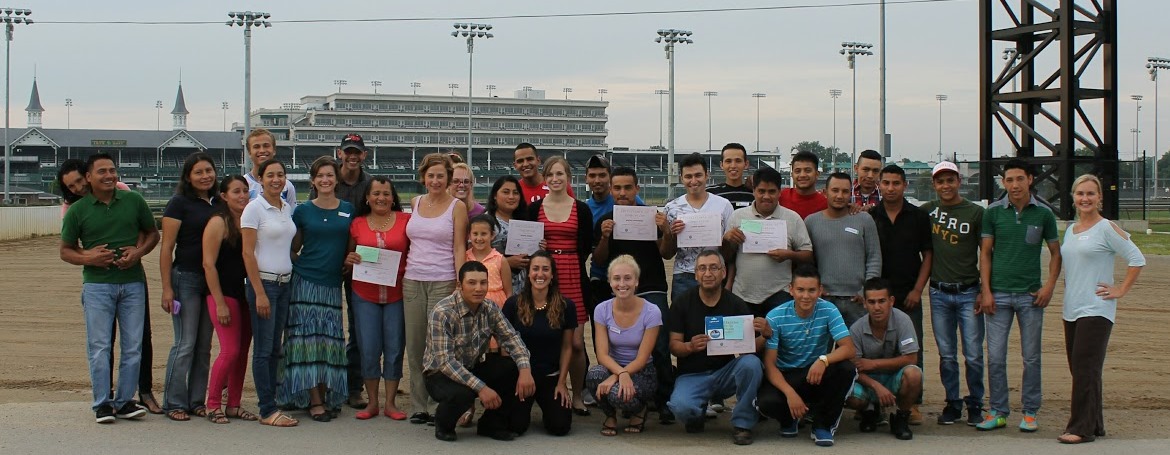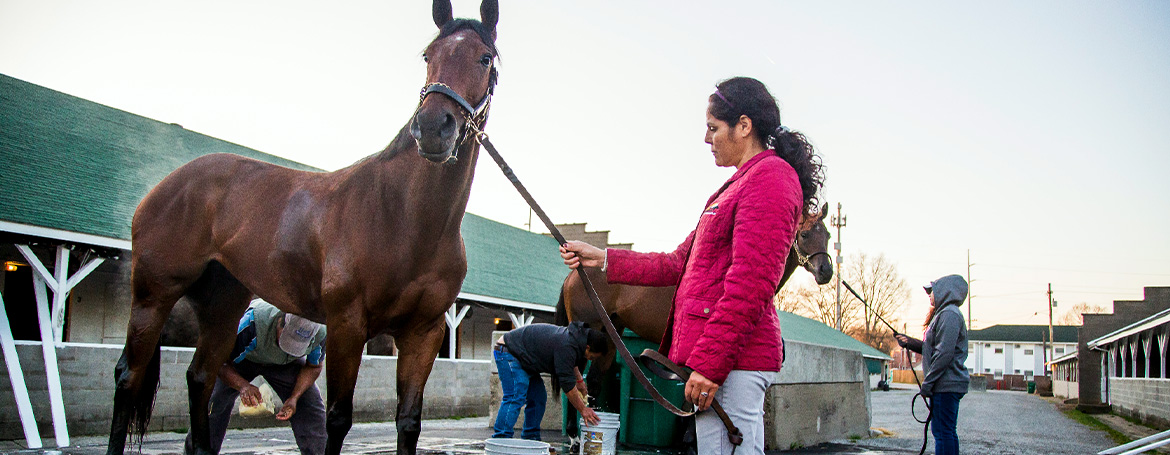The Backside Learning Center is an independent, non-profit organization building community and enriching the lives of equine workers and their families at Churchill Downs racetrack.
BLC strives to be the model organization, empowering equine workers and their families to thrive. They provide the educational opportunities and resources they need to empower themselves and their children.

The Backside Learning Center doors opened in June of 2004 thanks to the advocacy of a few visionaries within the Kentucky Derby Museum and Churchill Downs who identified the need to provide educational opportunities and other resources to backside workers. Seeded with an initial grant from Louisville Thoroughbred owners and breeders Richard, Elaine, and Bert Klein, and Bill Casner with WinStar Farm, this initiative began with the renovation of the old racing offices, which still house the BLC. In 2008, an 800-square-feet expansion took place, which was fully funded with in-kind support. Originally the Klein Family Learning Center and Winstar Library and Classrooms, the name was changed to the Backside Learning Center in 2010. Churchill Downs graciously continues to provide our building and its maintenance at no cost.
Since its inception, the BLC has evolved into a comprehensive resource center, providing an array of educational programming, an after school program for the children of backside workers, social services and referrals, and translation and interpretation. Of equal importance, we serve as a community center and a “home away from home” for the nearly 1,000 workers at Churchill Downs racetrack who find themselves far from family and friends.

| Some of the major professions found on the backside of a racetrack: | |
|---|---|
| Groom | Grooms are very close to the animals and are the first people to interact with them every day. They are often the ones who notice if a horse is sick or injured, and trainers rely on them to identify subtle changes in a horse's temperament or behavior. |
| Exercise Rider | The workday for exercise riders typically begins at 6 AM and consists of taking a number of horses out to the track for around 30 minutes each. These workouts include "breezing," or sprinting horses for about 3/8 of a mile. To condition the animal, riders slowly increase breezing distances over time, depending on instructions from the horse's trainer. They check in with trainers every day, who depend on their feedback when evaluating a horse's performance and soundness. |
| Hotwalker | A horse's heart rate and body temperature must be reduced gradually after vigorous exercise or there can be serious health consequences. Hotwalkers normally pace the horses around the outside of the track for 30 minutes, an hour on race days. If a horse isn't training that day, they will still need a hotwalker to help them "stretch their legs." |
| Farrier | A farrier cares for and shoes the hooves of racehorses to ensure their health, longevity, and success. Starting at 5 AM, most farrier work up to a dozen horses each day, generally at a rate of 15 minutes per foot. A horse needs to be re-shod about every 30 days. A horse's feet are its foundation and can be prone to injury. Farriers work closely with veterinarians to identify and correct foot problems early, working to correct a horse's uneven gait or difficulty switching strides. |
| Veterinarian | Vets for racehorses have to be on call to handle emergencies, day or night. Veterinarians generally work freelance and have several different trainers as clients. Vets check for lameness, respiratory problems, and even colds. Like other doctors, they use x-rays, endoscopes, and MRIs to examine patients. During a racing meet, vets can care for as many as 300 horses, about 60 horses per day. |